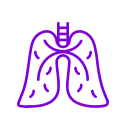
Diagnosing gMG

Patients with myasthenia gravis (MG) may experience several fluctuating signs and symptoms, which can last temporarily or change over time and may not be only specific to MG.1–3
These factors can contribute to significant delays in accurate diagnosis of MG.2 Thus, it is of high importance that patients discuss with their healthcare professionals any previous illnesses and symptoms before they undergo specific testing to rule out a variety of disorders that share symptoms with MG.2,4,5




- Eye movement evaluation or ice applied to the eyelid4,6
- Swallowing, speaking and/or breathing assessments4,6
- Breathing into a handheld device4
- Arm and/or leg movement evaluation4,6
There are three main types of autoantibodies that are assessed through blood testing in MG4:
- Autoantibodies against the acetylcholine receptor (AChR), which are found in about 80–85% of patients with MG9,10,12
- Autoantibodies against muscle-specific kinase (MuSK), which are present in about 6–8% of patients with MG8,9
- Autoantibodies against low-density lipoprotein receptor-related protein 4 (LRP4), which may be detectable in about 2% of patients with MG8,9
Blood testing is also useful for the evaluation of various other parameters relevant to patients with suspected MG.4
- Blood draw from arm
Nerves normally control muscles by sending electrical signals to the muscles.11 In individuals with MG, the electrical signalling between nerves and muscles is interrupted,11 and this can be detected with so-called electrophysiological tests.13 Such tests are particularly important in patients for whom blood tests do not detect autoantibodies Antibodies produced by the immune system that mistakenly target and attack the body’s own tissues or cells related to MG.1,13 The main electrophysiological tests in MG are1,13:
- Repetitive nerve stimulation (RNS)
During RNS, electrodes (small metallic pieces) are placed on the patient’s skin to stimulate the nerves with small pulses of electricity and assess the ability of nerves to send electrical signals to the muscles over repeated rounds of stimulation.11,14 - Single-fibre electromyography (SF-EMG)
During SF-EMG, a small needle electrode is inserted into the patient’s muscles to detect potential abnormalities in the electrical signalling between the nerves and the muscles.1,11
- Repetitive nerve stimulation (RNS) – Electrodes (small metallic pieces) placed on the skin14
- Single-fibre electromyography (SF-EMG) – Needle electrode inserted into muscle1
- Injection of a drug5,8
- Possible administration of a dye (for example, in the form of an injection)15,16
- Lying on a flat bed that passes through a CT or a MRI scanner15,16
